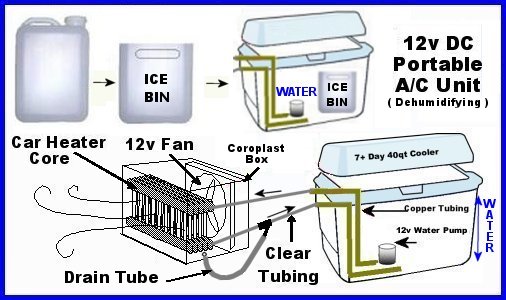Insulation on vehicles is much more complex than many would have you believe. The insulation has to breath, and the moisture needs to be wicked to the interior of the vehicle and away from the skin. If this is not accomplished correctly it will lead to moisture, mold, and rust problems in the future, which is of course hazardous to both your health and your vehicle's health.
A metal skinned vehicle will sweat, meaning that moisture will appear on the inside of the skin. NOTHING will stop this from happening. This moisture has to be dealt with for a successful insulation installation.
It CAN be done, but it is usually not worth it. Insulation works best when there is a constant heating or cooling source in the insulated space. This is simply not true in most vehicles. In most vehicles, Mother Nature is the most common constant source of heating or cooling, and therefore she will rule temperature wise in the end.
At best this insulation will only keep Mother Nature at bay for a few hours, at a cost in the thousands of dollars range. In the summer, simple ventilation will accomplish the same thing, and in the winter by morning it will be just as cold if not colder on the inside than it is outside, because that same insulation is fighting to keep the now warmer outside air out. It won't succeed, but it will keep you cold and miserable in the meantime.
No matter how much insulation you have, you still need good heating and/or cooling sources. The insulation does not eliminate that need. Too many people credit their insulation for staying comfortable when the real credit goes to the moderate climates they're in. When they're heavily insulated rig radiates heat all night in the summer, they think it's because they need more insulation, when in fact it's the insulation that's radiating that trapped and unwanted heat.
One of the beauties of window vans is that the manufacturer has already done the work for you. You start out with finished floors, walls, and ceilings, that have been designed to prevent moisture build up from the start. In the winter, those windows can act like solar heaters, and in the summer they can provide you with ventilation. You still need your heating/cooling devices, but you will need to use them a lot less.
When I switched from a heavily insulated cargo van to a window van, my winter heating costs got cut by over 30% thanks to the free heat coming in through the windows. In the summer I can open the windows and bring the temps down to comfortable very quickly in the evening, while the cargo van remained a sweat box for hours, even with all the doors open.
We can treat Mother Nature as either a friend or a foe. I learned a lot about this with my off grid cabin, and the exact same principles hold true for my camper vans. My whole Southerly half of my cabin is mostly windows. In the summer they are shaded by trees, and in the winter when the leaves fall off, they get full sunshine. On a sunny but cold winter day, the sun provides all the heat needed until sunset. In the summer, at 120° in the shade, through modified convective cooling, the indoor temps remain in the 70's. Mother Nature CAN be your friend if you plan things correctly.
















































